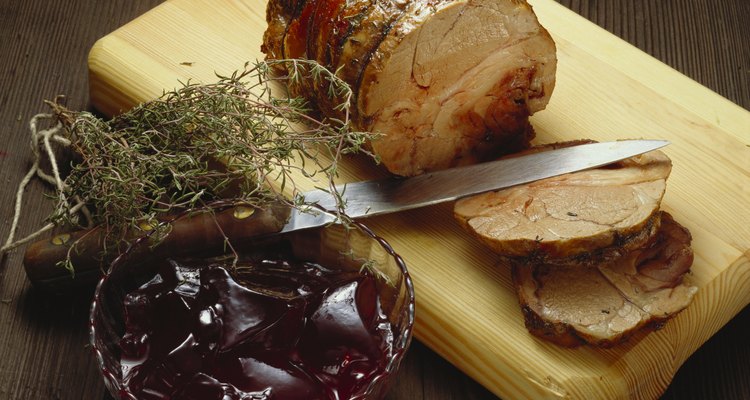
A succulent pork roast, surrounded by roasted vegetables or rice, is a tantalizing entrée at any dinner table. While such a meal is enjoyed by many, often cooks hesitate to cook pork roast for concern of it drying out. Fear not. By using a brine and roasting slow and steady, you can ensure that the pork roast is as juicy, tender, and flavorful as it looks.
Brining
Step 1
Prepare your favorite brine recipe, and allow to cool. Salt and brown sugar are two common ingredients used in a brine, as are fresh herbs, bay leaves and peppercorns. Place the pork roast in a large food-safe bag and add the cooled brine. Seal the bag, squeezing as much air as possible out. Place the bag in a large enough bowl to ensure the liquid will not spill out should the bag leak. Allow the pork to sit in the brine between 12 and 24 hours, in the refrigerator.
Step 2
Remove the bowl from the refrigerator 1 hour before roasting the pork. Take the pork out of the brining solution and place the roast on a plate so it can come up to room temperature prior to cooking. Discard the brine.
Step 3
Rinse the pork under cool, running tap water. Pat dry with paper towels and place on another plate. Rub your favorite dried or fresh herbs and spices all over the roast. The pork roast is now ready to cook.
Roasting
Step 1
Preheat oven to 300 degrees Fahrenheit. Contrary to many recipes, using a lower oven temperature provides even more cooking so that every part of the roast is moist. Adjust the oven rack to the middle position, thereby providing the most consistent heating for the roast.
Step 2
Add oil to frying pan and heat over medium high until the pan starts to smoke -- about 5 minutes. Add the seasoned roast and brown on all sides -- about 2 to 3 minutes per side. If the cut of pork has fat, be sure to brown in the pan fat side up at first. Finish browning fat side down. If you notice the pork is browning too much, lower the heat to medium.
Step 3
Place the browned pork in a roasting pan or Dutch oven. Using an open roasting pan will yield a roast with a slightly crisp crust. You may cover the pork with foil prior to cooking if you do not desire a crust. Alternatively, you may cook in a Dutch oven with the cover on during the entire cooking process.
Step 4
Cook until the internal temperature of the pork reaches 145 to 150 degrees F. To check for doneness, insert an instant read thermometer into the thickest part of the roast. There should be a little bit of pink inside when you check, as the pork will continue to cook and increase in temperature once out of the oven. A good rule of thumb is to cook for 20 minutes per pound.
Step 5
Remove the pork from the oven and place on a cutting board. Tent with foil and allow to rest for 15 minutes before slicing. When ready to slice, cut against the grain and serve on a platter.
Related Articles

How to Marinate a Top Round Roast

How to Cook Beef Top Round Pot Roast
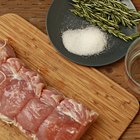
How to Brine Pork Roast
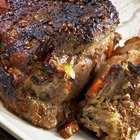
Barbecue Tips for Pork Rib Brisket

How to Make a Juicy Pork Tenderloin

How to Make a Blackbuck Antelope Roast

How to Cook a 15-Pound Rib Roast

Low-Temperature Cooking of Baked Pork

How to Cook a Pork Neck Fillet
How to Cook Pre-Seasoned Porketta
How to Slow Cook a Pot Roast With Beef ...
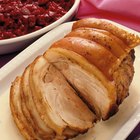
Can Pork Roast Be Pink in the Middle?

How to Smoke Pork on a Gas Grill
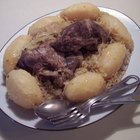
How to Cook a Boneless Sirloin Pork ...
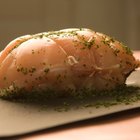
How to Braise Pork

How to Cook Pork Hamonado

How to Check the Internal Temp of a ...
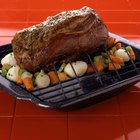
How to Cook a Whole Sirloin Tip Beef ...

How to Prepare Chuck Tender Roast

How to Cook Pork Chops on an Electric ...
References
Resources
Writer Bio
An educator since 1998, Catherine Misener started her writing career in 2009. Her work has appeared in "NW Kids," "The Oregonian" and "Vancouver Family Magazine." She holds a Bachelor of Arts from St. Mary’s University and a Master of Arts from the University of Michigan. After working in the food industry for years, she opened a small batch bakery.
Photo Credits
Eising/Photodisc/Getty Images